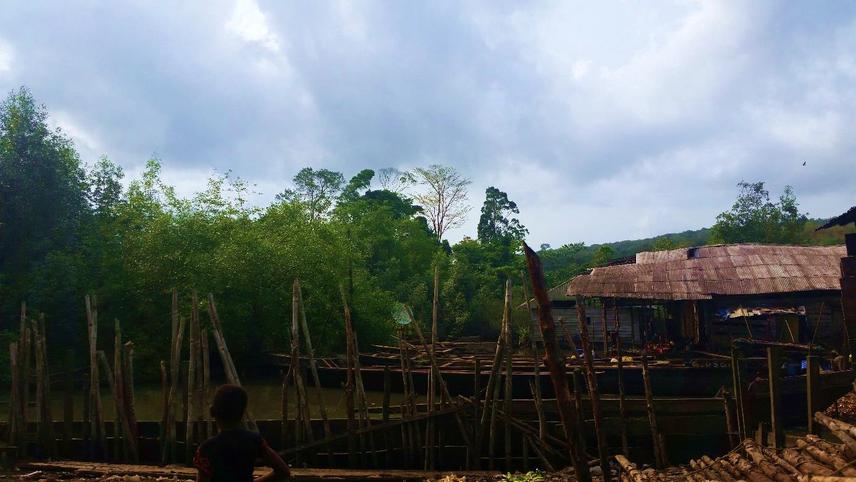Magdalene Namondo Ngeve
Other projects
5 May 2015
Local Gene Flow Dispersal, and Establishment of Mangroves in Cameroon: Combined Revelations from Morpho-Physical Observations
To assess local ecological knowledge (LEK) of mangrove ecosystems, and to raise awareness on mangrove conservation in local communities. Also to integrate LEK and scientific data for designing management guidelines for these forests.

Encroachment by local people into the mangroves for building residential homes.
The Cameroon Estuary complex (CEC) has the second largest extent of mangrove cover in Cameroon, after the Rio Del Rey Estuary, estimated at about 880 km2 to 1100 km2. Its mangroves stretch from the Bimbia River in the north to the fewer stands at the mouth of the Sanaga River, in the south. Some of its mangrove populations are among the highest in genetic diversity in Cameroon. Yet, this mangrove area is the most anthropized in this country, where several factors contribute to deterring government efforts on environmental protection. This highlights the need for including local people in ecosystem conservation, and thus the need for them to be rightly informed on the importance of their participation in conservation.
The objectives of this project are to
(1) assess local ecological knowledge (LEK) and valuation of mangroves by local communities around the CEC;
(2) assess (undocumented) threats and create awareness in local communities on the conservation of mangroves, through sensitization in educational campaigns and focused group discussions;
(3) the integrate LEK and scientific research in designing conservation guidelines for these forests.
The approach to achieving the objectives is via the administration of questionnaires, engaging in focused group discussions with different stakeholders, and carrying out educational campaigns to educate the younger generation and to engage them in participatory mangrove forest management. Three selected communities will be surveyed, that is from Bimbia, Tiko, and Wouri (Akwa-Nord); and the surveyed participants would be from diverse backgrounds (Fishermen, fish driers, mangrove wood sellers, students, amongst others). At the end of this project, capacity building on mangrove conservation should be achieved in these communities; while a management scheme incorporating LEK and scientific data on these systems should be designed to improve future management efforts. Findings and schemes developed for this project will be presented to the different bodies involved with mangrove conservation and will have wide applicability in improving management efforts in these areas and beyond.